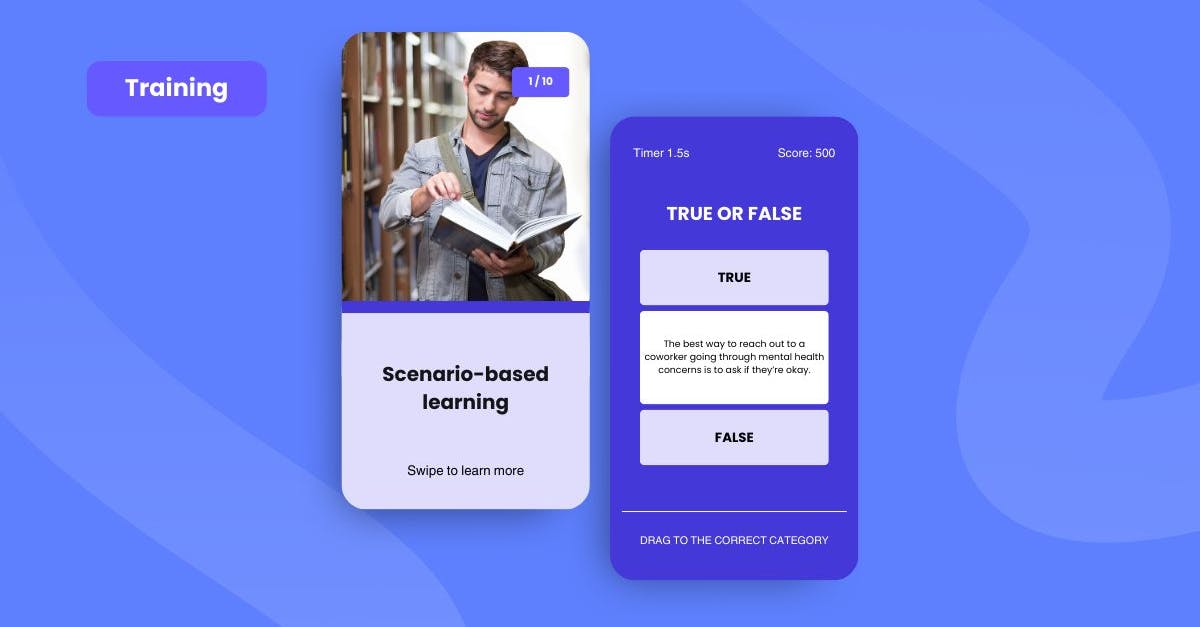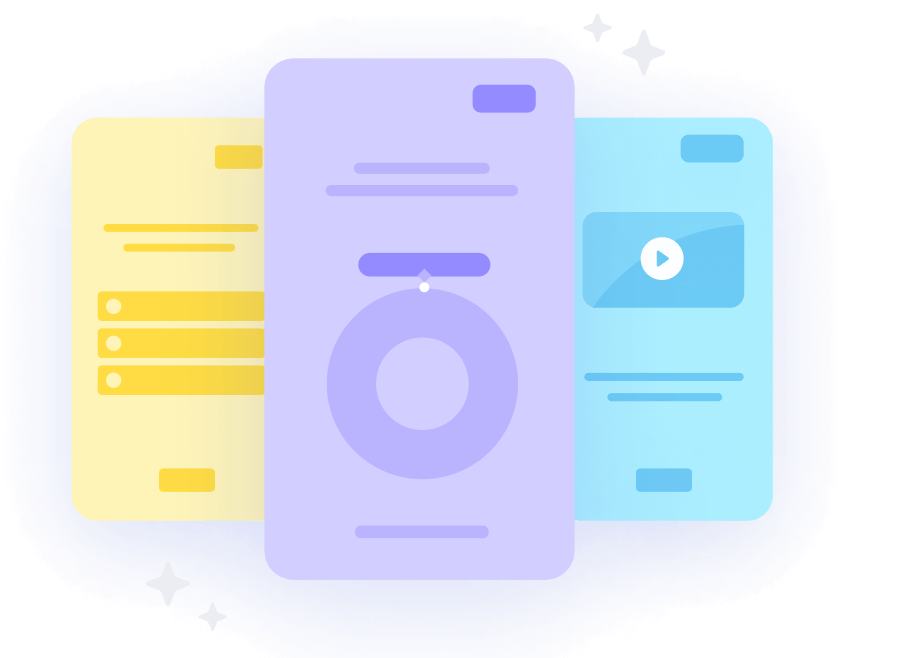Understanding the 10 types of learning styles

As a trainer, you have to take into account learning styles and their different types to deliver your training effectively. The goal of training programs is to develop the members of your team through multiple ways of learning.
Adapting different learning styles makes it easy for learners to absorb information compared to general training. There are three learning styles trainers are most commonly familiar with but, we'll take it a step further and explore up to 10 different types of learning styles.
Why is it important to identify learning styles?
Identifying learning styles is important because it allows trainers to tailor their teaching methods to individual needs, making learning more effective and engaging.
By recognizing whether a learner is visual, auditory, kinesthetic, or a combination of these, you can provide materials and activities that align with their preferred learning modalities. This customization enhances comprehension, retention, and overall success.
Plus, understanding learning styles fosters a sense of inclusivity in the classroom. This means accommodating diverse ways of absorbing information and fostering a more equitable educational environment.
Check out SC Training (formerly EdApp)’s best courses on learning to know more about how your learners can thrive whether in a digital or practical environment. There’s a course on the Future of Learning and Helping Others Develop.
1. Visual Learning
One common type of learning style we encounter is visual learning. Some people learn more through visual or spatial representations such as graphic designs, charts, diagrams, images, and anything that illustrates ideas. Visual learning style characteristics include visual-spatial intelligence.
Visual learners can recall knowledge and details when pictured in their heads. Similarly, visual learners retain information better when they visualize the connections between data as they process the lessons.
Gamified lessons are best used for this type of learning since there is a use of game-like elements that are big on interactive and visually appealing slides. SC Training (formerly EdApp) supports visual learning techniques through gamified learning and they have multiple engaging gamification templates that could help you when training your visual learners. Some gamification templates that you can use include memory, image/word match, and more.
2. Auditory Learning
Another type of language learning style is auditory learning where employees learn best when hearing information rather than seeing them. This type of learning is also called “aural learning” and employees who fall under this category process the course lessons when presented to them vocally.
Auditory learning examples include music, lectures, podcasts, and talks. Auditory learners prefer vocal collaboration and communication where they read lessons out loud, allowing them to absorb the information in their head.
3. Logical Learning
Logical learning is not that common compared to other learning styles. This type of learning involves the use of logical reasoning when processing data and solving problems. Compared to an auditory-visual learner, a logical learner looks into the different patterns to create a connection between information that makes sense to them, even if the association is not obvious to other people.
Highly logical employees are adept at recognizing relationships and retaining ideas through critical thinking exercises, statistics, facts, sequentially ordered lists, problem-solving tasks, and more.
4. Verbal Learning
Verbal learning is the process of learning about linguistic cues and responses. We associate auditory and visual learning with how children learn but there are actually different ways children learn.
Compared to other types of learning styles, verbal learners recall details better through reading, speaking, and writing. This is to say that they process information better when presented in words, may it be in speech or text form. Those who have this learning style tend to create study materials such as reviewers or flashcards that help them understand and memorize ideas.
5. Kinesthetic Learning
Kinesthetic learning involves the use of the different senses to take in information. It is also referred to as experiential learning, which is the process of learning by doing. This is different from the previous four types of learning because it's used in fields that require hands-on lessons to better explain a topic.
By involving the learners in the process of creating, planning, and solving, they absorb the lessons more by experiencing them firsthand. Some examples of kinesthetic learning include laboratory sessions, immersions, and hands-on workshops.
Blended learning is ideal for this setup as employees must learn the key concepts first before proceeding to the hands-on activities. With SC Training (formerly EdApp) microlearning, employees can take the microlessons anywhere using their mobile devices which is perfect for those with busy schedules.
6. Interpersonal Learning
Interpersonal learners function best when they engage in group study activities like quizzing one another, forming study groups, or bouncing ideas off one another.
Learners with a more interpersonal learning style generally enjoy interacting with others, working in teams and groups, and thriving through social interactions.
7. Intrapersonal Learning
Another one in the list of learning styles examples is intrapersonal learning, the opposite of interpersonal learning. Here, an individual loves learning alone and is referred to as an intrapersonal learner or a solitary learner.
The intrapersonal learner is self-driven, independent, and easily self-taught. In intrapersonal learning, they get to spend a lot of time reflecting on themselves and appreciate improving themselves.
8. Collaborative Learning
Collaborative learning focuses on group work and shared problem-solving. Learners who excel in this style enjoy working with others to tackle challenges and explore new ideas. They thrive in environments where teamwork is encouraged, allowing them to benefit from diverse perspectives.
This interactive approach not only enhances their understanding of the material but also builds essential skills such as communication, negotiation, and leadership.
9. Social Learning
Social learning emphasizes the importance of collaboration and interaction with others. Those who excel in this style enjoy group discussions, teamwork, and peer feedback.
By engaging with their classmates, social learners can share ideas and gain different perspectives, which enhances their understanding. This interactive approach not only deepens their knowledge but also builds essential communication skills and a sense of community.
10. Reflective Learning
Last in the list of learning methods is reflective learning which emphasizes thoughtful consideration and analysis of experiences. Learners who prefer this style take time to think about what they’ve learned and how it applies to their lives.
They often engage in activities like journaling or discussing their insights with others. This process helps them deepen their understanding and make connections between new information and their prior knowledge, leading to more meaningful learning outcomes.
SC Training (formerly EdApp)’s microlearning approach is a mix of these learning styles as it makes use of the optimal presentation learning materials through bite-sized slides showing text, images, audio, and videos.
Microlearning is an ideal way to make learning more engaging and effective. It’s an approach where bulks of overwhelming information are transformed into digestible modules that focus only on key elements of any subject. This form of training allows you to embed information into the long-term memory of your employees while also empowering them to have control over their learning process.
You can browse SC Training (formerly EdApp)’s fully-editable course library for a vast collection of microlearning courses about different categories and topics. You can also learn more about learning strategies and the 4 types of learning environments through SC Training (formerly EdApp)'s learning resources. These include lists, learning styles, charts, and more materials.
Sign up with SC Training (formerly EdApp) today and create training for different learning styles!
Subscribe to our blog newsletter
Author
Erika Operiano
Erika is a learning expert at SC Training (formerly EdApp), a mobile-first microlearning LMS for everyone's training needs. She also has experience in training & development, project management, and digital marketing. During her free time, she enjoys several hobbies such as watching series, fine arts, music, and some sports.
